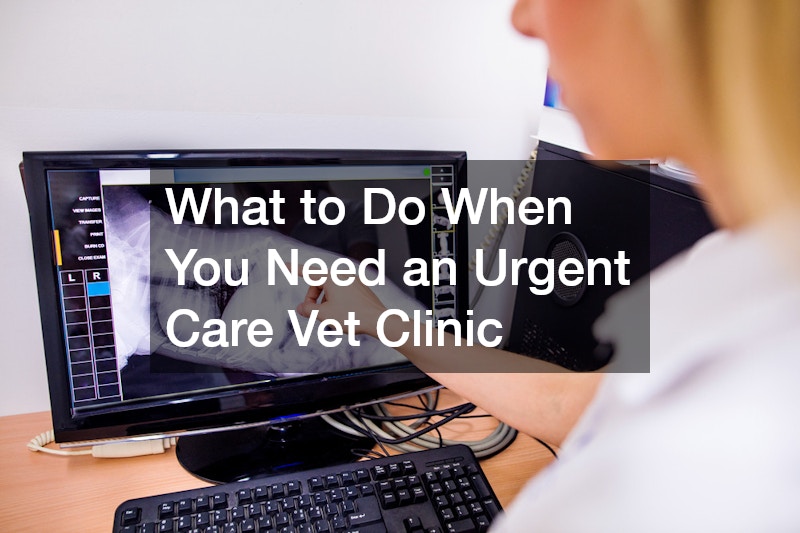
Understanding when and why you may need the services of an urgent care vet clinic is crucial for any pet owner. This article will guide you through the decision-making process, help you identify the right time to seek help, and prepare you for the visit.
When Should I Take My Pet to an Urgent Care Vet Clinic?
Identifying Signs of an Emergency
Recognizing signals of distress in pets is a vital skill for any responsible pet owner. These signs can range from sudden lethargy to unexplained whining or excessive panting.
Early detection of these symptoms can lead to timely intervention, potentially saving your pet’s life. If your pet shows significant changes in behavior or physical condition, it may indicate an emergency.
A substantial distress signal, such as labored breathing or difficulty walking, should never be ignored. Immediate attention from a vet can prevent a minor issue from becoming life-threatening.
Common Situations Requiring Urgent Care
Pets often find themselves in situations that might lead to emergencies, such as ingesting toxins. Common household items like chocolate, certain plants, or cleaning chemicals can be hazardous.
If you suspect your pet has ingested something dangerous, it’s crucial to act quickly. Seeking urgent care can counteract the effects of toxins efficiently.
Another scenario that might require urgent care is an injury caused by an accident or altercation with another animal. Understanding these situations helps prevent unnecessary complications and ensures swift treatment.
How Do I Find an Urgent Care Vet Clinic Near Me?
Using Online Resources Effectively
The internet is an invaluable tool for finding urgent care vet clinics nearby. Websites provide essential details such as clinic hours, services offered, and customer reviews.
When searching online, prioritize clinics with positive reviews and high ratings. This often reflects the quality of care you can expect for your pet during emergencies.
Many clinics also have websites where you can find additional resources and FAQs. These pages can provide comfort and reliable information to assist you in urgent circumstances.
Locating 24/7 Services in Your Area
Some pet emergencies cannot wait for regular office hours, making 24/7 clinics essential. Finding a clinic that operates around the clock ensures your pet gets timely care when needed.
Maintaining a list of 24/7 services in your area provides peace of mind during emergencies. You can often find these clinics by searching online directories or using specialized vet clinic apps.
It’s also helpful to establish a relationship with emergency vets in your area. Familiarity can expedite care when time is of the essence for your pet’s health.
What Information Should I Bring to the Vet Clinic?
Essential Medical Records
Having accurate medical records on hand is crucial during a vet visit. This includes details on vaccinations, past surgeries, and any chronic conditions your pet may have.
Medical records help vets quickly understand your pet’s health background, leading to more informed decisions. Always keep an updated copy of these important documents readily accessible.
A regular update of your pet’s medical records can aid in emergencies. This information can facilitate the diagnostic process and improve treatment outcomes.
Details About the Current Emergency
Providing specific details about the current emergency can assist the vet in understanding the situation. This might include the time when symptoms first appeared or what substances your pet was exposed to.
Being clear and detailed in your explanation helps the vet assess the urgency and develop an effective treatment plan. This communication can be vital in ensuring the best care for your pet.
In stressful situations, it can be challenging to recall all details, so consider keeping a list of symptoms and events. This preparedness can be beneficial in communicating accurately with your vet.
What to Expect During the Visit?
Initial Assessment and Triage
The initial assessment of your pet involves a quick but thorough examination to identify life-threatening issues. Vets prioritize based on the severity of the condition during triage.
Quick assessments allow for immediate action to stabilize your pet if necessary. Understanding this process can help reassure you about the care your pet is receiving.
The goal of triage is to manage resources effectively when multiple pets need attention. It ensures that those in critical condition receive urgent care first.
Possible Treatments and Interventions
The treatment plan varies depending on the diagnosis after the initial assessment. Common interventions might include administering medications, performing surgery, or offering supportive therapies like fluids or oxygen.
It’s crucial to discuss potential treatment options with the vet and understand their implications. Informed decisions contribute to the overall welfare of your pet.
Your involvement in the treatment plan is vital and offers your pet the best chance for recovery. Knowledge of possible interventions helps in understanding the process your pet is undergoing.
How Can I Ease My Pet’s Stress Before, During, and After the Visit?
Pre-Visit Preparations
Preparing your pet for a vet visit includes familiarization with the carrier and car rides. Practicing calm behavior in these settings can reduce anxiety significantly.
Avoid feeding your pet right before the visit to prevent motion sickness. Reassuring your pet with treats and gentle words can also help keep them calm.
Consider using sensory items like favorite toys or blankets that carry familiar scents. These can comfort your pet in an otherwise unfamiliar environment.
Supporting Your Pet Post-Treatment
Post-treatment care is crucial for a smooth recovery. Providing a quiet and comfortable space at home helps your pet relax and recover.
Monitor for any signs of discomfort or adverse reactions following the visit. Consistent communication with your vet is essential to managing ongoing symptoms effectively.
Engage gently with your pet to avoid excitement that might aggravate their condition. Observing these care tips helps ensure a speedy return to health.

